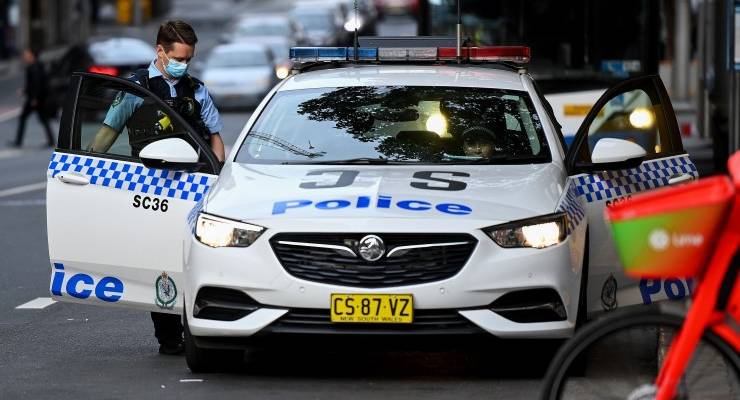
It’s hard to imagine now, but just over a week ago Sydney’s outbreak seemed to have plateaued. Most cases were not infectious in the community. The lockdown seemed to be reining-in the Bondi cluster’s spread.
But while health authorities looked the wrong way, the Bondi cluster moved west. By the middle of last week, it had seeded around Fairfield and Bankstown, working-class areas with large migrant populations. Suddenly, like Dan Andrews a year earlier, Premier Gladys Berejiklian was warning about large family gatherings. Like Andrews, whose lockdown of nine public housing blocks breached residents’ human rights, Berejiklian sent police to blitz south-west Sydney.
As Bondi residents swanned on the beach and sipped their takeaway cocktails, people in the south-west were having their shopping checked by police to make sure they were out for essentials. Yesterday, NSW Treasurer Dominic Perrottet was forced to apologise to Fairfield residents. The government had abruptly announced anyone leaving the area for essential work had to get tested every three days, and by morning, queues at drive-through clinics stretched for kilometres.
Why the west suffered
It’s not surprising this outbreak got worse when it spread to the south-west. People in the Fairfield LGA are more likely to be employed in jobs where it is impossible to work from home than their counterparts in the affluent eastern suburbs. Most households speak languages other than English, and the messaging from white health experts, great for people who spend too much time on Twitter or religiously tune in to 11am pressers, tends not to stick.
Telling people to stay at home doesn’t work quite so easily when you need to rock up to your shift to earn a paycheque. And telling people not to visit grandma is poor advice when, as is the case in many non-white families, grandma lives upstairs. By the time NSW needed to tailor its messaging, turning to volunteer translators and community leaders just like Victoria had to last year, it was too late.
“I think we could have done better messaging,” Chief Health Officer Kerry Chant said yesterday at a conference for multicultural media.
NSW Health’s most recent epidemiological report shows how badly authorities missed what was going on out west. In the week the lockdown was introduced, there were 105.44 tests per 1000 people in South Eastern Sydney, compared to 31.66 per 1000 in South Western Sydney. In the Fairfield Local Government Area, that proportion was 18.30 per thousand, compared with 304.27 in Waverley LGA. At the time, most cases were in the east, where the government briefly introduced a local lockdown. But low testing numbers meant NSW Health was missing chains of transmission on the other side of town.
It’s not surprising this is an area that was missed. Sydney’s media and political establishment, clustered in the inner city, east and north shore, wrinkle their noses at heading west. And it’s not surprising that when the cases started appearing, the response was to send out the cops in a big show of force. This is the part of the city where police once set up a Middle Eastern Organised Crime Squad, after all.
Fairfield Mayor Frank Carbone has hit out at the way people in his suburb had been mistreated.
“This isn’t a crime emergency, this is a medical emergency. I think that people should be treated with respect and I think it doesn’t happen out here in Western Sydney,” he said.
The wrong lessons learned?
When Sydney returns to normal, everyone will find a cautionary tale in the outbreak. For critics of NSW Health’s lockdown-averse approach, which has successfully managed big outbreaks while preserving residents’ freedom, it will be grim vindication. Had Sydney gone harder earlier, things would perhaps look different now. But like the boy who cried wolf, their warnings were ignored.
But there are two more important lessons, critically intertwined, which Sydney should take away instead. The first one is about luck. Sure, Sydney handled previous outbreaks well, through beefed-up testing and finely tuned contact tracing. But one of its biggest was in the Northern Beaches, literally called the insular peninsula. Probably the only part of any Australian city where a localised lockdown could work. Melbourne, comparatively, got extremely unlucky last year, when its outbreaks started seeding in the wrong places. Sometimes, whether an infected person becomes a superspreader is quite simply a matter of chance.
Luck is only part of the picture. The rest is about how, 18 months in, health authorities still sometimes overlook how the virus intersects with race and class inequalities. It’s why kneejerk calls for more policing, harder lockdowns and curfews — pushed by many a media-hungry alarmist pundit — would be the wrong takeaway here. Firstly because such force is always applied unevenly. But also because it’s unclear how flooding shopping centres with cops will have much impact when most transmission is happening in households (there has been one single case of transmission in a shop, zero outside).
People in Fairfield aren’t stupid. They see the hypocrisy of police helicopters which never flew over Bondi, circling their neighbourhoods. More over-policing will further marginalise these communities, and could further reinforce distrust of health authorities, shattering any sense of “all in this together”. And that only makes the next outbreak harder to stop.








Crikey is committed to hosting lively discussions. Help us keep the conversation useful, interesting and welcoming. We aim to publish comments quickly in the interest of promoting robust conversation, but we’re a small team and we deploy filters to protect against legal risk. Occasionally your comment may be held up while we review, but we’re working as fast as we can to keep the conversation rolling.
The Crikey comment section is members-only content. Please subscribe to leave a comment.
The Crikey comment section is members-only content. Please login to leave a comment.